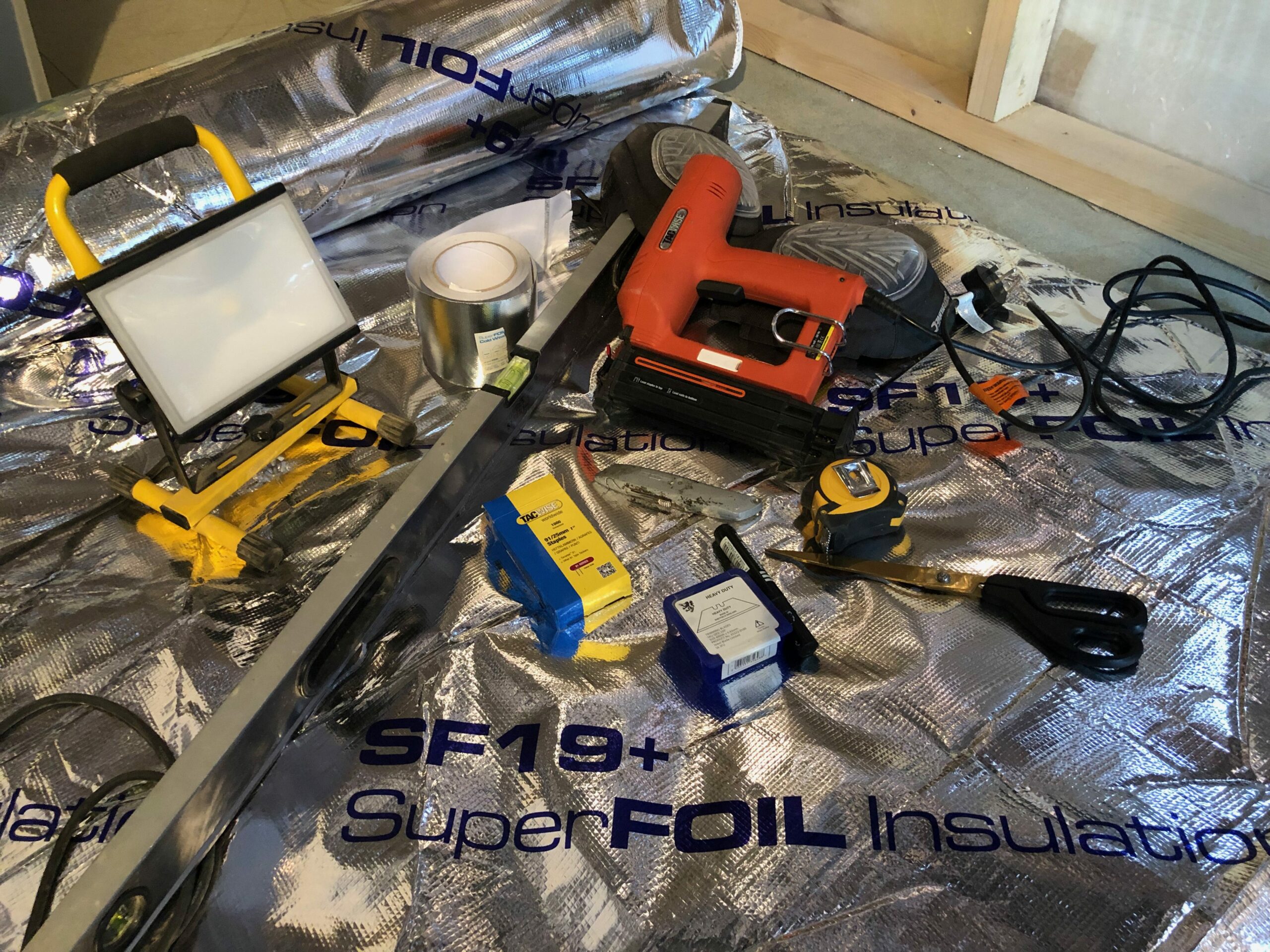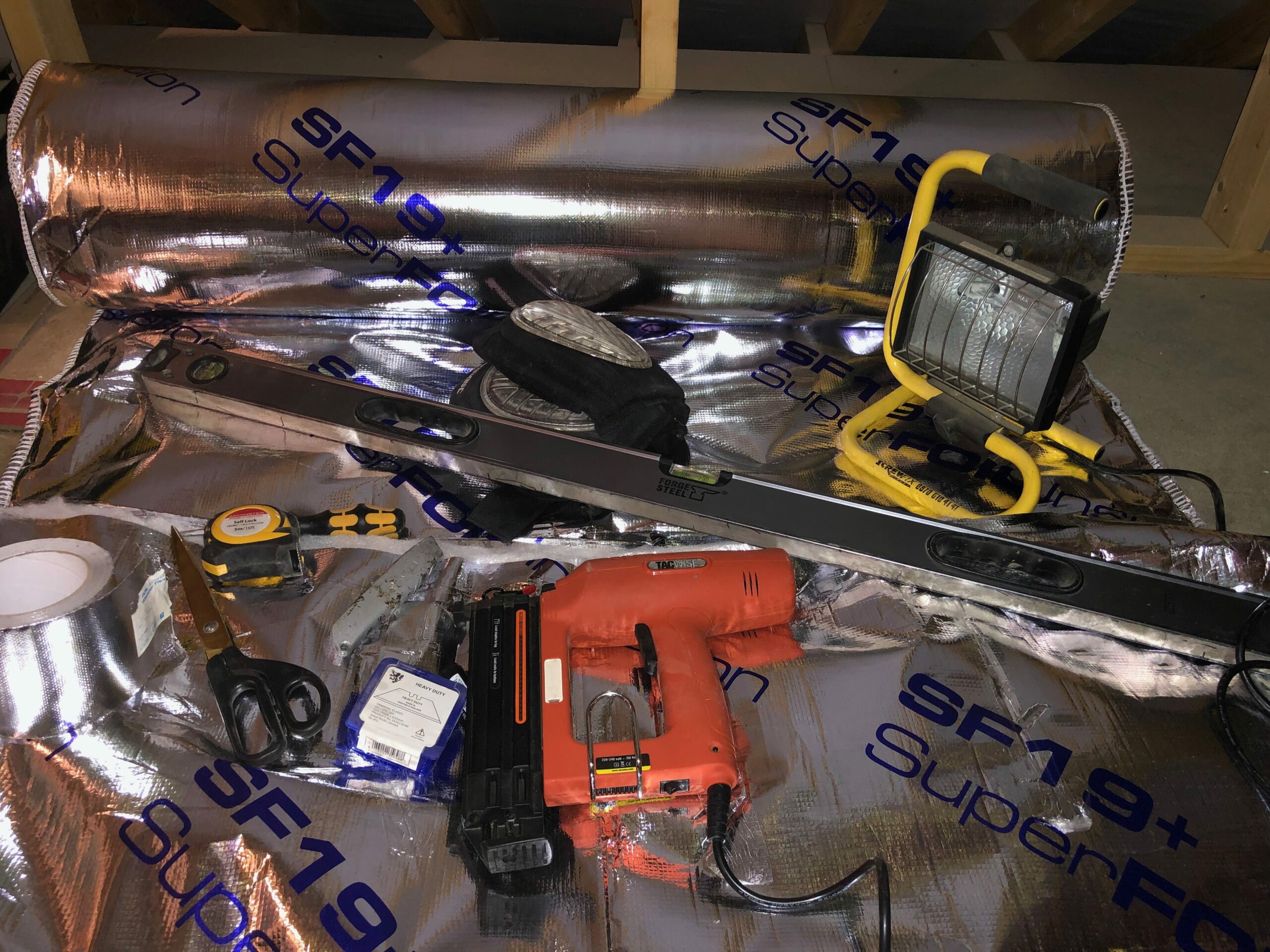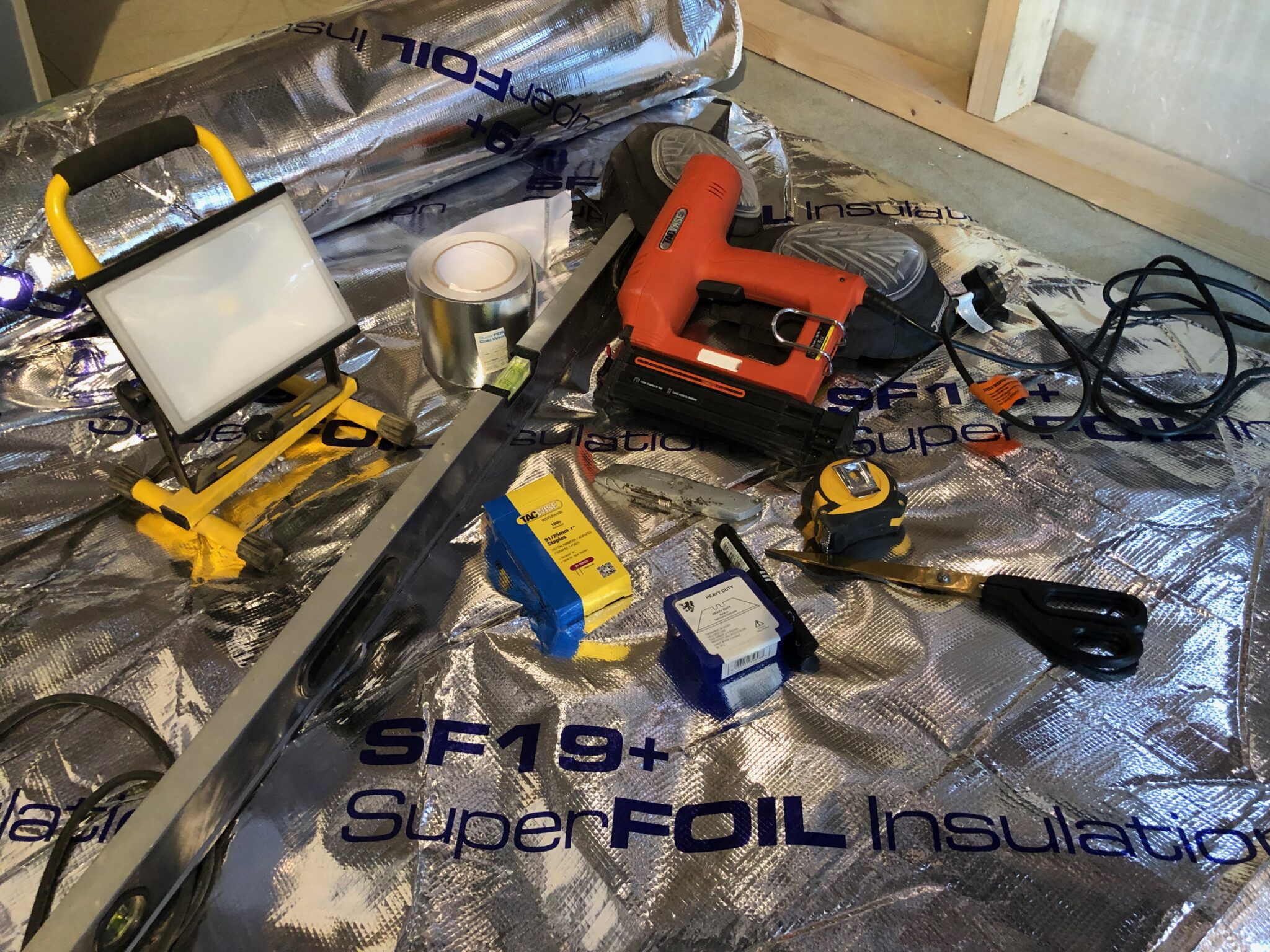One of our customers, Paul, recently upgraded his loft with our multifoil insulation. Here, he gives a run-through of the most helpful tools and equipment he used to make his home more comfortable and efficient.
For his project, Paul opted for a combination of our SF19+ and SF40 to achieve his target U-value and he managed to complete the task working on his own.
Insulating a loft might seem like a huge job, particularly if you’re converting it into a room or living space, but it really needn’t be. If you follow these tips, you can achieve a warmer, more energy efficient home with just a few pieces of equipment, which you might already have to hand.

Knee pads
These are absolutely essential if you’re doing a loft installation from the inside of your home. You’ll be doing a fair bit of kneeling down, so your knees will thank you for this seemingly small act of kindness.
I’ve found that the gel pad types are particularly comfortable, especially if there is an uneven surface to rest on.
The other thing to look out for is how wide and how well the straps fit. You don’t want them falling off or down all the time but also if the strap is too wide they can be uncomfortable round the back of the leg when kneeling.
If you can, try them on with the trousers you intend to wear when insulating your roof to ensure comfort and make sure you can move freely, without any noticeable restriction.
Lighting
Even if the workspace has some light already illuminating it, I’ve found that a good high-power floodlight is a valuable tool.
When working in a loft area, especially when getting down towards the wall plate, good lighting is really useful – and essential for optimal accuracy and safety.
I used to use a halogen-type light, which I have now replaced with a LED-type that runs on much less power and is just as bright. After all, if you’re insulating your home (especially in the current cost of living and utilities crisis) you’re likely to be aspiring to optimal efficiency!
Spirit level
I have used a spirit level here – not to set the level – but as a straight edge to cut against.
This particular level is 1.2m wide, so it’s ideal for the 1.2m SF19+. I have another 1.8m wide level that I have used for the 1.5m wide material. I also used the spirit level as something to kneel on to compress the material, which makes it easier to cut without it bunching.
Any straight edge will work, but I’ve found it best if it can be knelt on while cutting.
An offcut of 4×2 works as well, although you need to make sure that you don’t cut into the wood rather than the SuperFOIL.
Utility Knife
The good old Stanley knife is perfect -Just make sure it’s sharp by making sure you have plenty of replacement blades; this is because you are essentially cutting through metal and this blunts the edge quite quickly.
I personally replace the blade after around 6 or 7 cuts. This sounds excessive but is worth the effort to get a good, sharp, even cut right down to the mm.
Scissors
The ones that I have are a good quality pair of decorator scissors with a long blade. I use these when the initial cut with the utility knife has not gone all the way through.
This wasn’t used much with SF19+ but more so with SF40 due to its increased thickness and density. If you are planning on using SF40 regularly, then I would personally urge you to use a mechanical cutter for a cleaner finish.

Staple/Nail Gun
As I do a fair amount of DIY, I’ve splashed out on a dual-purpose staple/nail gun.
I opted for the electric-powered variety as I knew I would always have a power supply when I needed it and I would not have to delay installation if a battery began to flag or fail.
Mine operates using a staple of up to 45mm and a 50mm nail, which is more than enough for the job in hand. The gun saves a lot of time and I personally think it’s essential if you are working alone or wanting to get the job finished that much quicker.
Hopefully, this gives you an accurate idea as to what basic equipment I’ve found useful from fitting out my loft areas and a starting point for your own project, so you know what you’ll need for your ideal insulation installation.
If you’re planning a loft conversion, we have lots of resources that can help you complete the job quickly and without any drama!
Visit our page dedicated to roof applications, check out our FAQs, Use our U-value calculator to get a quick recommendation, or contact us to speak to a member of our team – you can also use our chat function by clicking on the orange icon in the bottom right of this page.

